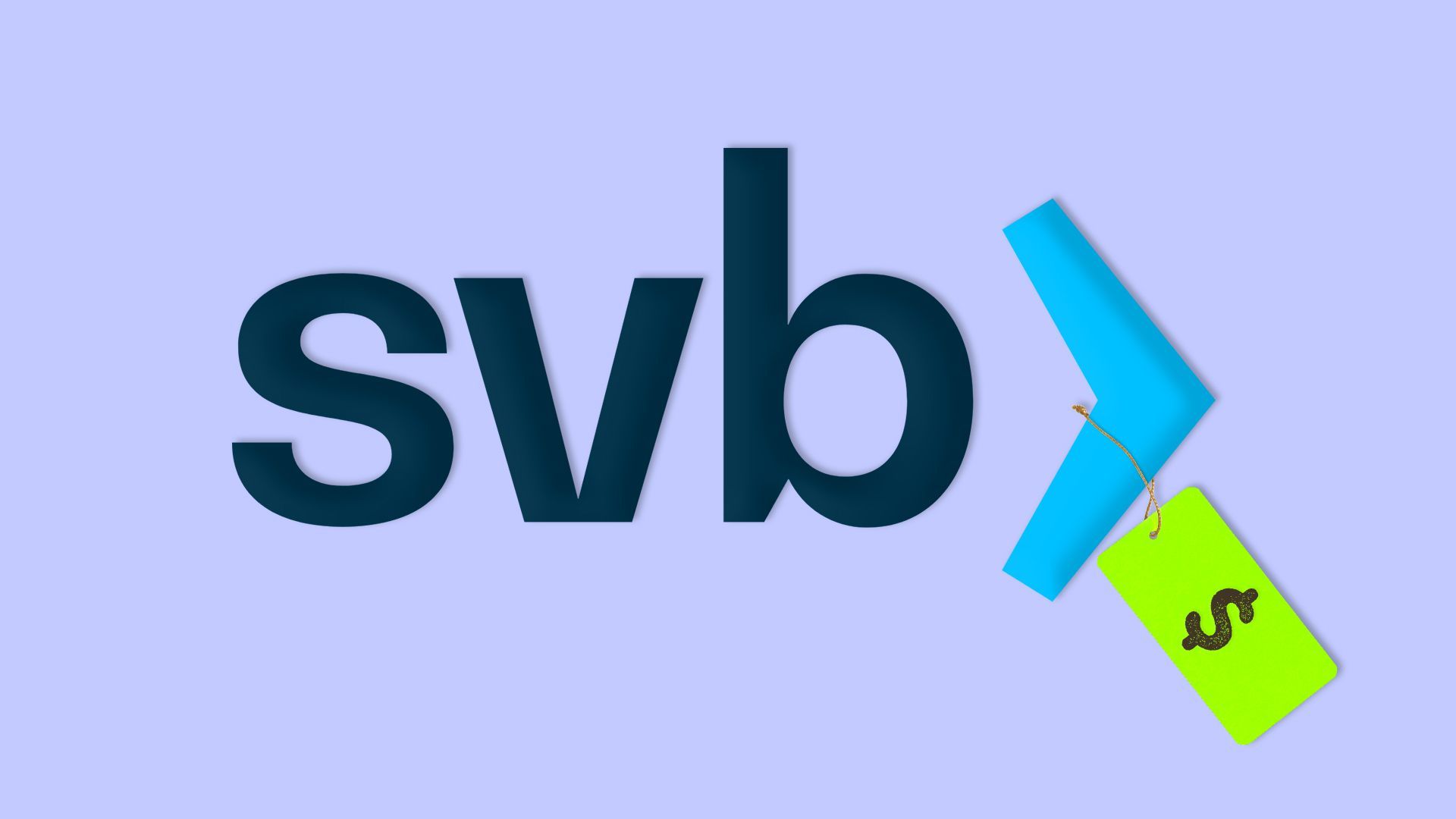SVB agrees to sell venture capital arm for $340 million

- Dan Primack, author ofAxios Pro Rata

Illustration: Gabriella Turrisi/Axios
The fire sale of Silicon Valley Bank is nearly complete, a scant 14 months after the lender's spectacular collapse.
Why it matters: This concerns the fate of SVB's venture capital business, called SVB Capital, which still manages around $9.8 billion in assets for limited partners.
- SVB Capital wasn't included in the sale of SVB's lending and wealth management units to North Carolina-based bank First Citizens, nor last fall's sale of SVB's securities unit to management.
The latest: SVB's bankrupt parent company has agreed to sell SVB Capital to a new entity backed by Brookfield and Sequoia Heritage, subject to bankruptcy court approval.
- It's to be affiliated with Pinegrove Capital Partners, a firm formed in 2023 to focus on VC continuation vehicles and other venture liquidity solutions.
- Pinegrove and SVB Capital will operate independently, but are expected to collaborate.
Deal details: The upfront sale price is $340 million in cash, according to court documents.
- There's also around a $15 million termination fee were a superior offer to be accepted.
Look ahead: SVB Capital views this deal as an opportunity to reorganize and restart, with one source expressing excitement about the flexibility of operating outside of a publicly traded, federally chartered bank (let alone outside the bankrupt, tarnished shell).
- It's expected to originate new deals, as evidenced by an earnout provision tied to future fundraising hauls.
- That likely means it will hire new staff, or perhaps rehire some folks who were laid off earlier this year when it appeared that SVB's creditors would hold onto SVB Capital and manage it out.
The bottom line: SVB Capital is the bankrupt parent's last major operating unit, although it still holds a small research firm (MoffettNathanson) and a lot of net operating losses.